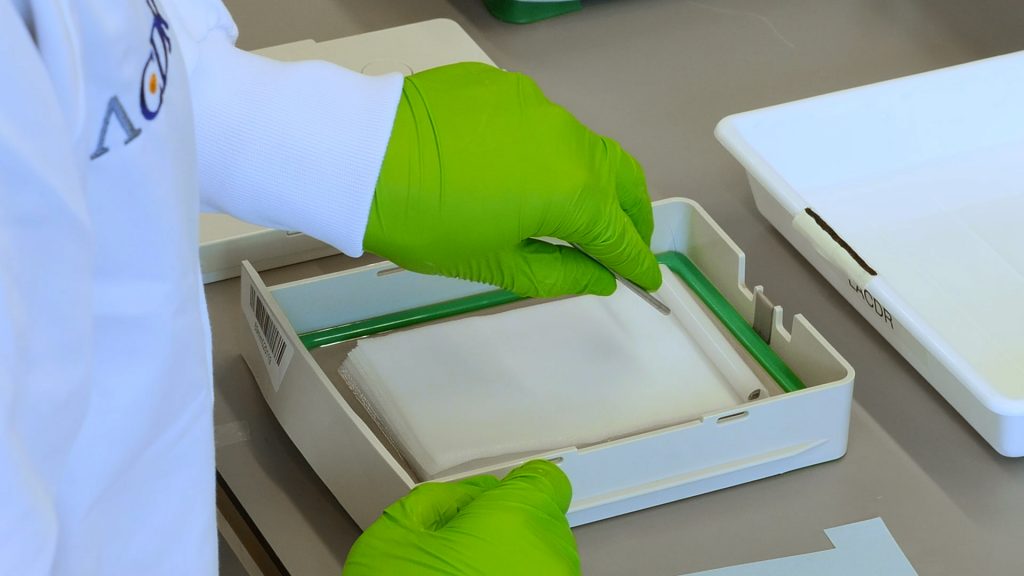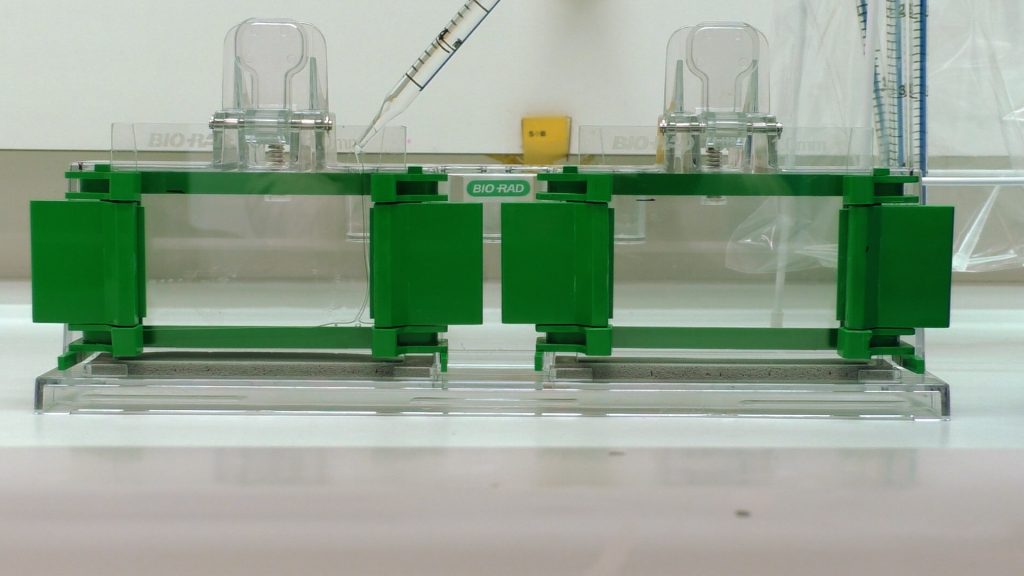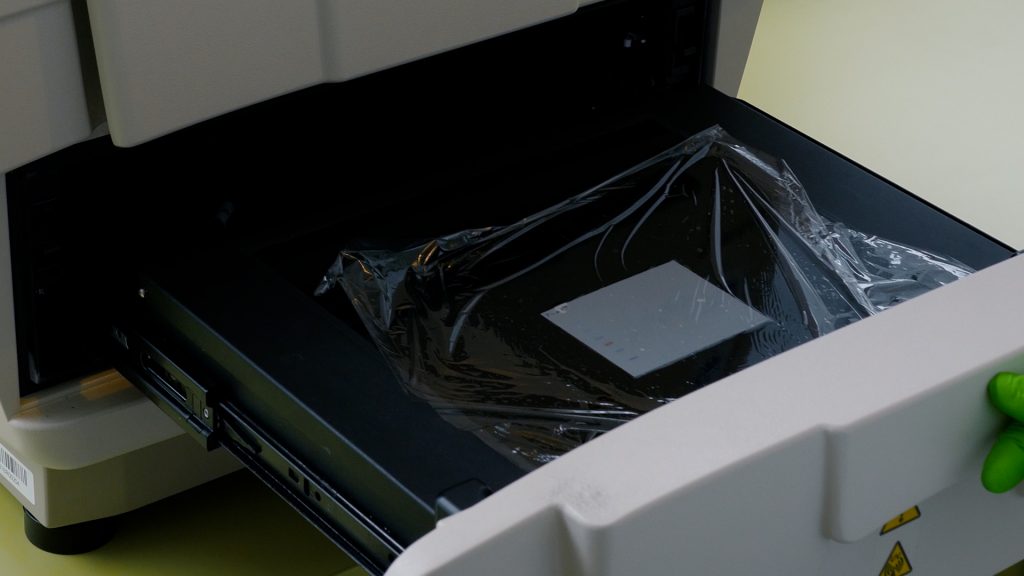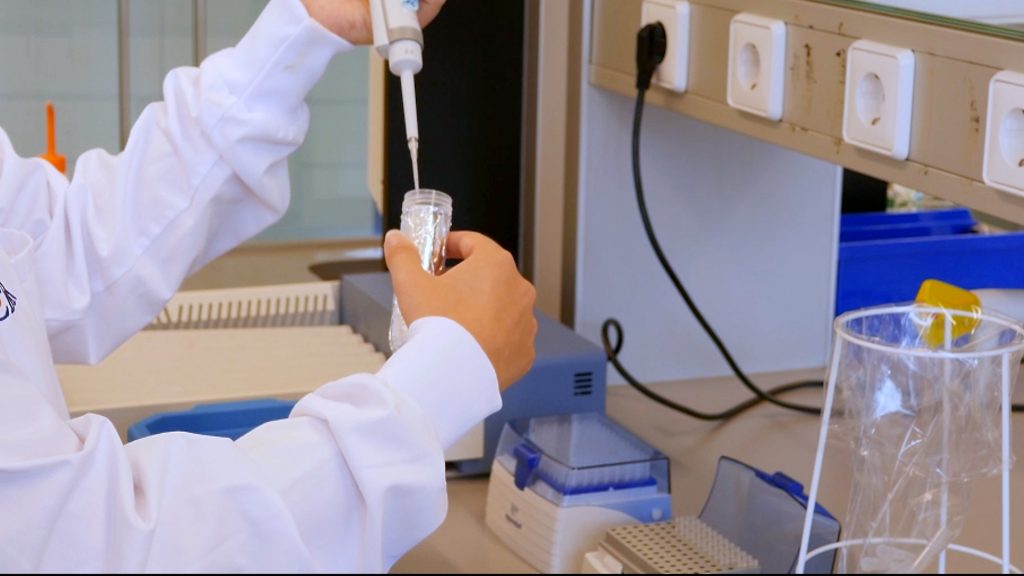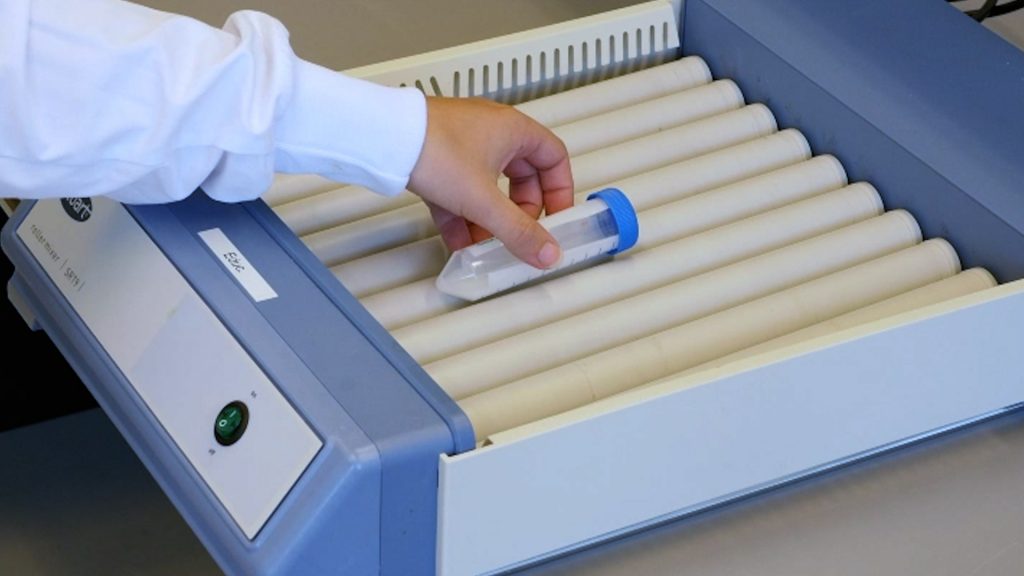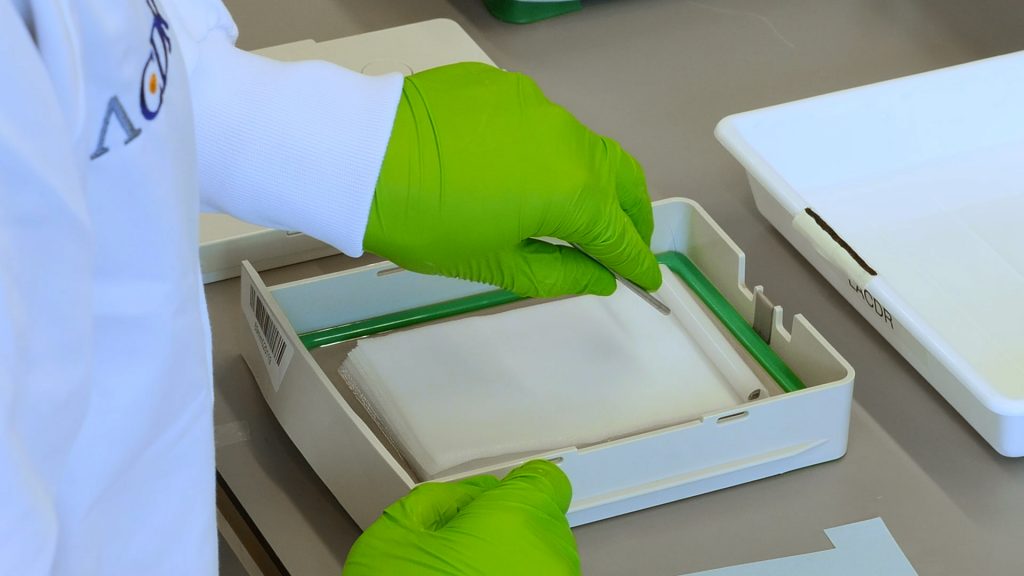Immunostaining western blot
This video shows how to perform western blot membrane staining with antibodies.
- Tineke Bijl
-
(0)
- 0 enrolled students
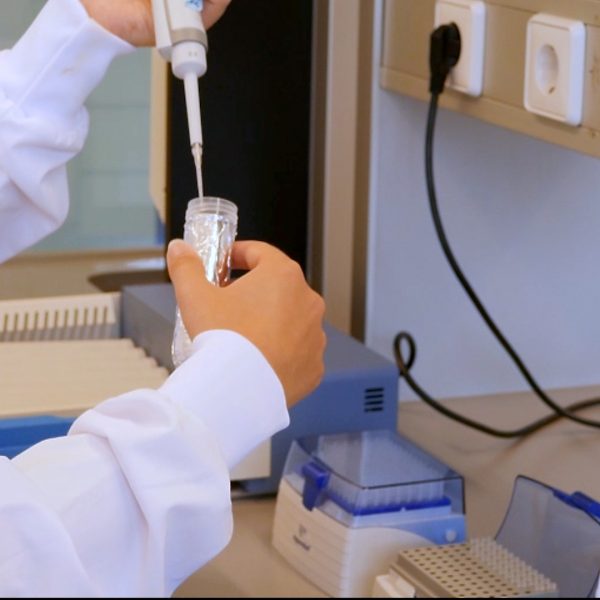
Description
Non-interactive video download link (mp4).
The script that has been used to create the video shown above can be downloaded as excel script file.
| 1 |
|
| 2 |
|
| 3 | Incubate overnight on the roller bench at 4 °C for pERK. Incubate overnight at RT for pAkt. Label the tubes properly! So you can find back your tubes tomorrow and that you still know which antibody is in which tube! |
| Second antibody stain | |
| First antibody stain | |
| 1 | Take your tubes from the roller bench (4oC) and remove the 1st antibody solution from the tubes by pouring it in a new 50 ml tube. p-AKT and p-ERK separate! The 1st antibodies are collected and stored for reuse. |
| 2 |
|
| 3 |
|
| 4 | Incubate for 1 hour at room temperature on the roller bench. |
| 5 |
|
Indicate which label is conjugated to which antibody or antibodies. You can check the antibody information for the western blot in the datasheet provided for this course. |
Why is it important to know which animal produced the antibody?
|
What is the correct course of action after adding the 2nd antibody to the membrane?
|
What is the purpose and result of washing the membrane between adding the 1st and 2nd antibodies?
|
In order to detect the protein of interest, both primary and secondary antibodies are used in Western Blotting. The previous question already showed which antibodies will be used in this experiment. The dilution factor of the primary antibody solutions are: · rabbit-anti-p-Akt (1:2000) · rabbit-anti-p-ERK (1:1000) · mouse-anti-α-Tubulin (1:1500). We need 3 ml diluted AB in 1% BSA in TBS-T. What amount (in µL) of the primary antibodies is needed for the primary antibody staining?
|
To visualize the protein of interest, we need secondary antibodies to complete our complex. The dilution factor of the secondary antibody solutions are: · anti-rabbit IgG-HRP (1:2000) · anti-mouse-Alexa Fluor 647 (1:2000) We need 3 ml diluted AB in 1% BSA in TBS-T. What amount of the secondary antibodies is needed? We need [a] μl of anti-rabbit igG-HRP, then [b] µL of anti-mouse-Alexa Fluor 647.
Correct answer: a = 1.5 and b = 1.5 Options · 0.75 · 1 · 1.5 · 2 · 3 Correct answer: |
Download zip to import in LabBuddy.
Please make sure that your product exists and valid for this course
- Skill levelIntroduction video
- CategoryBiochemistry
Related videos
-
Free
Pouring SDS PAGE gel
-
Free
Blocking membrane
Copyright information
This video is created by Leiden Academic Centre for Drug Research (LACDR), Faculty of Science at Leiden University under a open Creative Commons Attribution-NonCommercial-ShareAlike 4.0 International License. When using this video in its original version please refer to www.labprep.video. When adapting the video, mention the source ‘adapted based on the original version that is created by the labprep.video team’. It is not allowed to use the video for commercial purposes without consultation with the creators. You can contact us via info@labprep.video.

